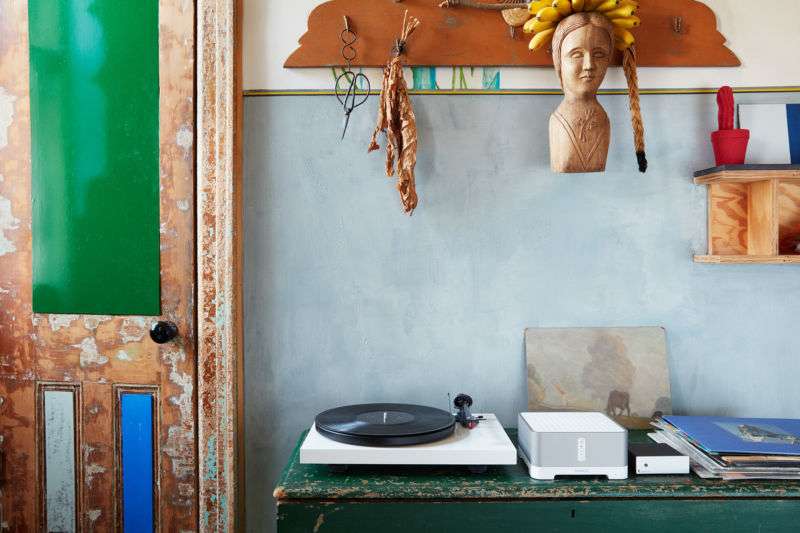
Sonos sunsets several smart speakers’ software support, spurring storm

Sonos has been slinging smart speakers—and tech for connecting them—to dedicated fans since 2005. This week, however, Sonos announced the end of software support for its older product lines, and many of those once-loyal customers are furious.
Software support for “legacy” product lines will end in May of this year, Sonos said Tuesday in a corporate blog post and an email sent to customers. The list of products being forced off into the tech sunset includes original Zone Players, Connect, and Connect:Amp (launched in 2006; includes versions sold until 2015), first-generation Play:5 (launched 2009), CR200 (launched 2009), and Bridge (launched 2007).
Owners of an affected product basically have two options. Either they can take advantage of Sonos’ “Trade Up” program to snag a discount on new Sonos stuff, or they can keep using their old product with the understanding that inevitably, certain functions will simply begin to fail over some long, unspecified period of time.
For users who do elect to keep their old equipment, there is an important caveat: any Sonos system is only as current as its oldest, weakest link. Basically, if you have a discontinued legacy device hooked up to newer, supported Sonos devices, the current devices will also be unable to receive software updates after the May 2020 cutoff. That’s the bad news, but here’s the good: Sonos says in its customer FAQ that beginning in May, it will introduce a way for device owners to separate their unsupported hardware onto a secondary network.
Unhappy customers
In its announcement, Sonos bragged about the longevity of its products, boasting that 92 percent of all devices it has ever shipped are still in use today. But that day is apparently ending. “We’ve now come to a point where some of the oldest products have been stretched to their technical limits in terms of memory and processing power,” Sonos said, explaining its decision.
The company added, “Ideally all our products would last forever, but for now we’re limited by the existing technology” and urged owners to trade in and recycle their old devices.
Sonos promises at least five years of software support for a device from the time the company stops selling it. The newest of the products on the chopping block this week left shelves in 2015, so the company is making good on the conditions it has promised to consumers. Before the era of software updates, though, a very high-quality speaker or speaker set usually had a much longer lifespan—for example, the living room speakers my father, an audiophile who worked in radio, bought almost 35 years ago are still going strong (albeit connected to a much newer receiver). And Sonos consumers, who expected their expensive products to last longer, are mad.
A quick Twitter search for “Sonos” brings up a whole lot of pledges to boycott the company from here on out, with comments such as “No one drops thousands of dollars on high-end speakers & expects them to be rendered obsolete!” or “Gone from ‘best product on the market, wouldn’t buy anything else’ to ‘not touching with a barge pole’ in one email.”
Audiobrick
Sonos launched its trade-in program in late October, allowing owners of old products to upgrade to newer ones for a 30 percent discount. Trading in something old for a discount on something new is hardly a revolutionary idea; most folks who have bought a replacement smartphone or, for that matter, a new car have likely done it at least once. Sonos, however, generated hostility for its trade-in program that wireless companies and automakers don’t because, unlike your old iPhone or family sedan, a Sonos device cannot be reused.
Sonos included a “recycle mode” as part of its trade-in process. Putting a Sonos device into recycle mode not only deletes all the user’s personal data but effectively bricks the device permanently. Once a Sonos product has been deactivated, the company says, “the product cannot be re-added to any system or used to set up a new Sonos system, even if the product has been reset to its factory settings,” and the decision to deactivate it is irreversible. Instead of bringing in old products and refurbishing or reselling them, Sonos tells users to bring them to an e-waste center or send it back to Sonos for component recycling.
A representative explained the company’s reasoning to The Verge late last year, saying, “For those that choose to trade-up to new products, we felt that the most responsible action was not to reintroduce them to new customers that may not have the context of them as 10+ year old products, and that also may not be able to deliver the Sonos experience they expected.”
Three weeks later, that statement about legacy products being unable to deliver the full experience has become crystal clear. Sonos in December had not yet announced publicly when support for those products would terminate but seems to have more or less put that timeline in place internally.




